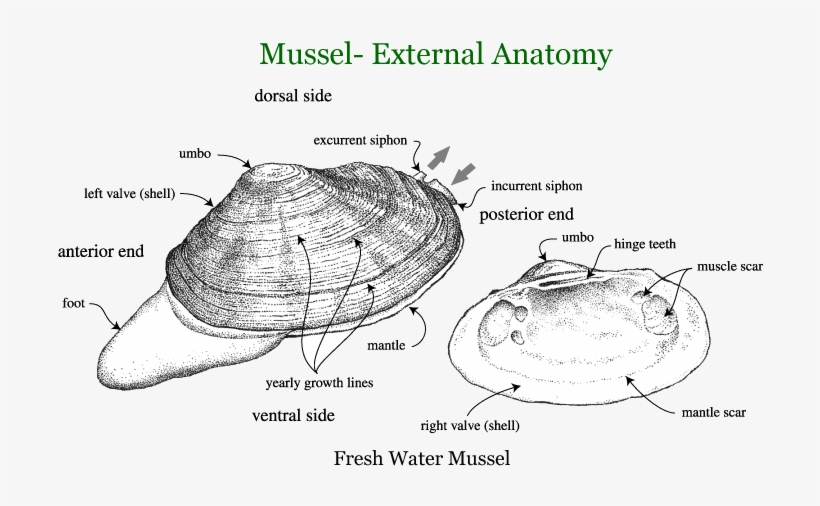
Anatomy Of A Clam
The style of citing shown here is from the MLA Style Citations (Modern Language Association). When citing a WEBSITE the general format is as follows. Author Last Name, First Name (s). "Title: Subtitle of Part of Web Page, if appropriate." Title: Subtitle: Section of Page if appropriate. Sponsoring/Publishing Agency, If Given.
Clam ClipArt ETC
Procedure1.Put on your lab apron & safety glasses. 2. Place a clam in a dissecting tray and identify the anterior and posterior ends of the clam as well as the dorsal, ventral, & lateral surfaces. Figure 1. Figure 1. The left valve is on top if your clam is correctly positioned.The siphons are at the posterior end.

Clam Anatomy Diagram Quizlet
Cedar Key, FL LNST@uf l.edu Taxonomy Kingdom: Animalia Phylum Mollusca Latin for "soft things" Largest and most diverse marine phylum 25% of named marine organisms About 100,000 recognized species Classes in Phylum Mollusca Gastropoda - snails C eph al opod a - squid s, oct opus Polyplacophora - chitons Scap h opod a - tusk sh ell s

Clam Anatomy Diagram anatomy diagram source
The heart of a clam can be seen in the photograph below. Bivalves have three pairs of ganglia but do not have a brain. Most mollusks have separate sexes but most snails (gastropods) are hermaphrodites.. See the diagram below for the location of the adductor muscles. Figure 4. Adductor muscles of a clam.

Clams Anatomy Barnegat Bay Shellfish
Clam dissection is a fantastic first step into the world of anatomy and dissection, particularly for young learners. Clams are easy to find either in the sand or in the supermarket and the project can be looped in with dinner. Learn about clams, dissection, and anatomy in this fun afternoon project.

Clam Anatomy Diagram
Clams characteristically lie buried from just beneath the surface to depths of about 0.6 metre (2 feet). They rarely travel over the bottom as do some other bivalves. Most clams inhabit shallow waters, in which they are generally protected from wave action by the surrounding bottom.

bioweb images Marine biology, Anatomy, Fish anatomy
Hard Calm or Northern Quahog. Anatomy

Clam Dissection BIOLOGY JUNCTION
C. Would you rather study a diagram to learn about a clam or investigate a real clam? Explain. Posterior Adductor Muscle Scar DORSAL Hinge Ligament Drawings courtesy of BIODIDAC. SIDE VENTRAL SIDE Anterior Adductor Muscle Scar Pallial Line (attachment of mantle) Outside of the clam: 1). The soft body is protected by how many shells (valves)?

Clams Characteristics, properties, reproduction and more
Location Cardinal Teeth of Clam a tooth of the hinge of a bivalve mollusk's shell situated just under the umbo and often relatively large Gonad of Clam A sex gland or reproductive gland Mantle of Clam

clam anatomy YouTube
Clam. Clam is a common name for several kinds of bivalve molluscs. The word is often applied only to those that are edible and live as infauna, spending most of their lives halfway buried in the sand of the seafloor or riverbeds. Clams have two shells of equal size connected by two adductor muscles and have a powerful burrowing foot. [1]
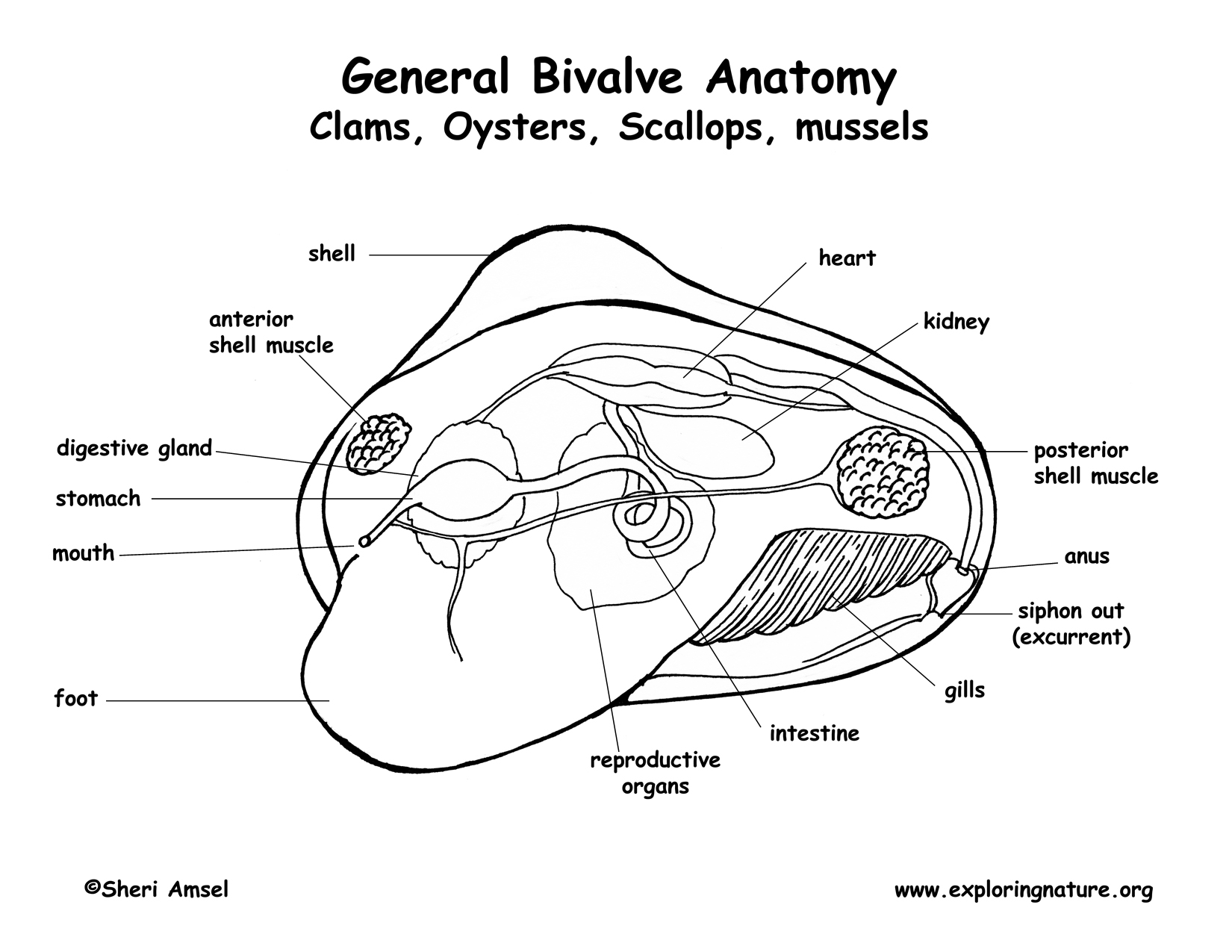
Clam Diagram Labeled
Anatomy of a Clam Grade Level: 5-12 Subject Area: Biology, Anatomy Time: Preparation: 10 minutes Activity: 30-45 minutes Clean-up: 10 minutes Student Performance Standards (Sunshine State Standards): 10.03 List examples of aquatic crops and animals (LA.910.1.6.1, 2, 3, 4, 5; LA.910.2.2.2; SC.912.L.17.9).
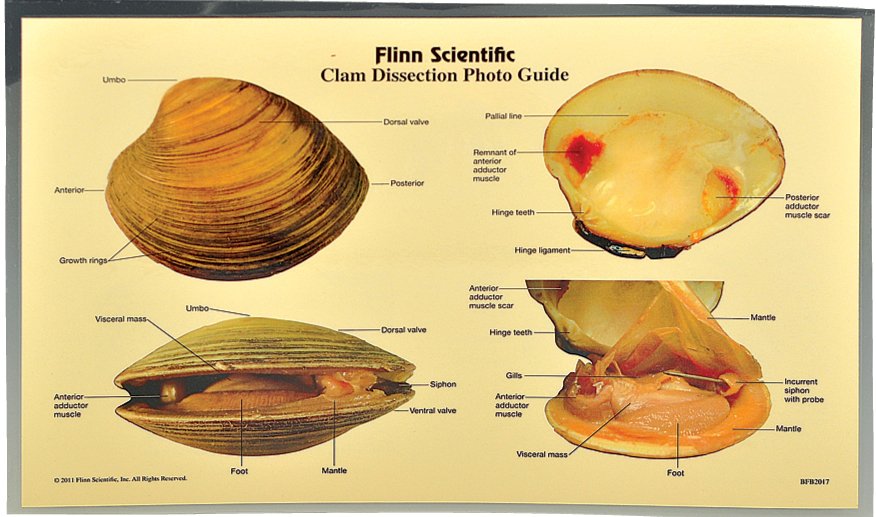
Clam Dissection Labeled ubicaciondepersonas.cdmx.gob.mx
Clams are marine mollusks with two valves or shells. Like all mollusks, a clam has a mantle which surrounds its soft body. It also has a muscular foot which enables the clam to burrow itself in mud or sand. The soft tissue above the foot is called the visceral mass and contains the clam's body organs. Taxonomy Kingdom - Animalia Phylum - Mollusca
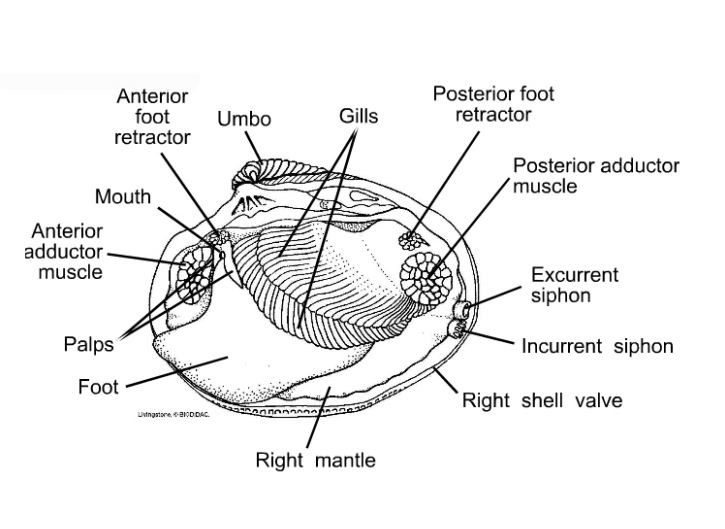
Clam Dissection Diagram Quizlet
The diagram below provides an overview not only of that first year of growth, but also of the full softshell clam lifecycle from starting as an egg through adulthood and reproduction. Lifecycle of the soft shell clam (reproduced from a 1983 Maine Department of Resources report by C.T. Newell)
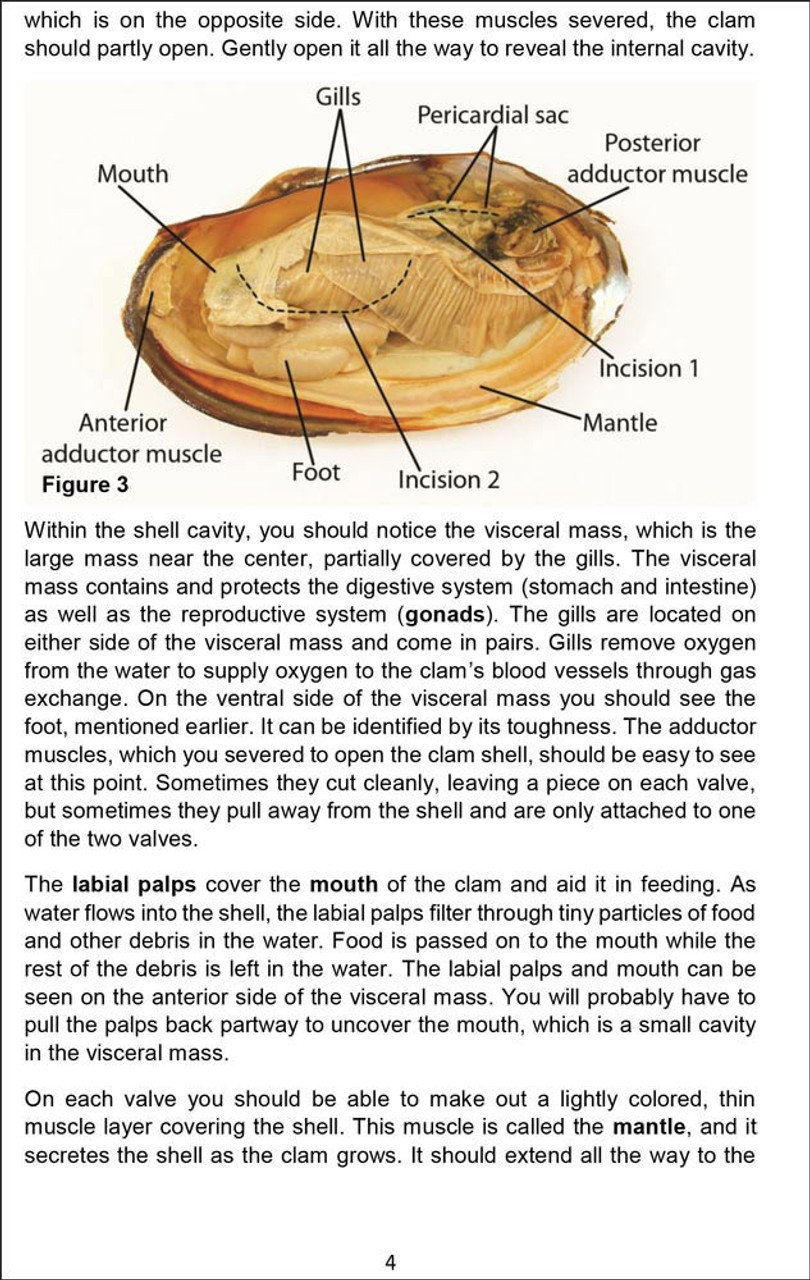
Clam Dissection Guide
Snapshot: Bivalvia. Phylum Mollusca, Class Bivalvia. Common names of representatives: clams, scallops, oysters, mussels. Habitat(s): marine (salt water), freshwater (lakes, rivers, and streams). Feeding type(s): mostly suspension feeders; some deposit feeders and carnivores Geological range: Cambrian to today. Clade defining feature(s): two hinged shells surrounding a body with large stomach.

Clam Dissection BIOLOGY JUNCTION
This video details the external and internal anatomy of a clam. Additional video, lesson plans, quizzes, additional dissections, and more are available in the in the Support Materials section above and in the Dissection 101 Collection.

anatomy of a clam Marine biology, Clams, Anatomy
Internal Clam Shell Anatomy 1. Mantle •Covers visceral or body mass •Holds in fluid •Secrets new shell 2. Ant. adductor muscle 3. Post. adductor muscle •Hold valves shut 4. Pericardium cavity •Region covered with thin, dark membrane •Contains 2-chambered heart and kidney in a fluid-filled sac 5. Mantle edge